How To Be Smart When Buying A Sofa
Have you been thinking about buying a new sofa lately? Well if so, be sure you buy smart; here are a few tips to help ensure that you’re getting a durable, quality sofa.
Tip #1: Checking the Frame of the Sofa
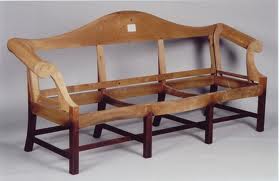 Checking the frame of the sofa is a very important step before buying. What the frame is made out of determines how long it will last, so make sure when you’re investigating it has a hardwood frame. Hardwood frames can be a bit more spendy, but well worth the money. Particle board, plastic, or metal on the other hand can be flimsy or warp; Some durable hardwood’s include kiln-dried oak, ash, or beech so keep an eye out for these when you’re on the hunt. An additional tip while checking you’re future sofa is: make sure the legs of the sofa are either part of the frame, or held to the frame with dowels. This creates a stronger structure and gives you more for you’re money.
Checking the frame of the sofa is a very important step before buying. What the frame is made out of determines how long it will last, so make sure when you’re investigating it has a hardwood frame. Hardwood frames can be a bit more spendy, but well worth the money. Particle board, plastic, or metal on the other hand can be flimsy or warp; Some durable hardwood’s include kiln-dried oak, ash, or beech so keep an eye out for these when you’re on the hunt. An additional tip while checking you’re future sofa is: make sure the legs of the sofa are either part of the frame, or held to the frame with dowels. This creates a stronger structure and gives you more for you’re money.
Tip # 2: Ask About the Joinery of the Sofa
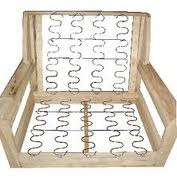 If your sofa joints are connected in any of the following ways it is solidly constructed: wooden corner blocks, double wooden dowels, wooden dowels, or metal screws and brackets. Having nails or staples included is always good for extra reinforcement, but they should never be used alone to hold joints together.
If your sofa joints are connected in any of the following ways it is solidly constructed: wooden corner blocks, double wooden dowels, wooden dowels, or metal screws and brackets. Having nails or staples included is always good for extra reinforcement, but they should never be used alone to hold joints together.
Tip #3: Test the Springs on the Sofa
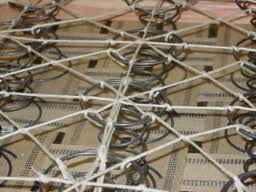 A lot of sofas are made with serpentine springs- snaking wire that is usually very supportive. Find out if the springs metal is heavy or light, because the heavier the springs are the less they will sag over time. Another good quality to have along with durable springs having them eight-way-hand-tied. Again it will cost you more money, but will contribute to the quality and overall comfort factor of the sofa. Try testing the sofa by sitting on an outside edge to see if it squeaks; squeaking can be that the springs aren’t correctly placed or they could be hitting the frame.
A lot of sofas are made with serpentine springs- snaking wire that is usually very supportive. Find out if the springs metal is heavy or light, because the heavier the springs are the less they will sag over time. Another good quality to have along with durable springs having them eight-way-hand-tied. Again it will cost you more money, but will contribute to the quality and overall comfort factor of the sofa. Try testing the sofa by sitting on an outside edge to see if it squeaks; squeaking can be that the springs aren’t correctly placed or they could be hitting the frame.
Tip #4: Feel the Fillings of the Sofa
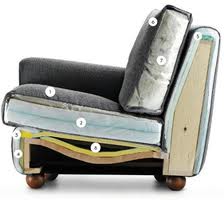 Polyurethane foam is the most common easy care filling, and it’s low-cost. The low-density foam seems to deteriorate faster though, and high-density foam can sometimes feel harder, so what should you do? HR- High Resilient foam is of course a more expensive route, but far more comfortable and longer lasting than anything like goose-duck feathers that clump, or polyester that flattens quickly. Another tid-bit that would be a less expensive option is to have HR foam in a down layer wrapped in polyester batting.
Polyurethane foam is the most common easy care filling, and it’s low-cost. The low-density foam seems to deteriorate faster though, and high-density foam can sometimes feel harder, so what should you do? HR- High Resilient foam is of course a more expensive route, but far more comfortable and longer lasting than anything like goose-duck feathers that clump, or polyester that flattens quickly. Another tid-bit that would be a less expensive option is to have HR foam in a down layer wrapped in polyester batting.
Tip #5: Find a Tough Textile
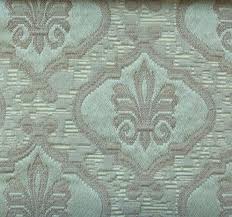 Sofas that are used everyday really need to have a high stain resistance as well as wear factor. Linen and Cotton can be treated for stain resistance, but usually aren’t easy to clean. If your big worry is cleanability a good recommendation would be a synthetic microfiber. Sofas that are high-traffic areas shouldn’t have a loose weave because that snags very easy. Something like wool or leather would be great for durability, but a less expensive option would be to snag a fabric with woven in patterns- not printed.
Sofas that are used everyday really need to have a high stain resistance as well as wear factor. Linen and Cotton can be treated for stain resistance, but usually aren’t easy to clean. If your big worry is cleanability a good recommendation would be a synthetic microfiber. Sofas that are high-traffic areas shouldn’t have a loose weave because that snags very easy. Something like wool or leather would be great for durability, but a less expensive option would be to snag a fabric with woven in patterns- not printed.
Hopefully this will help you in your hunt, and leave you a little more knowledgable about sofas, durability, and their construction!






